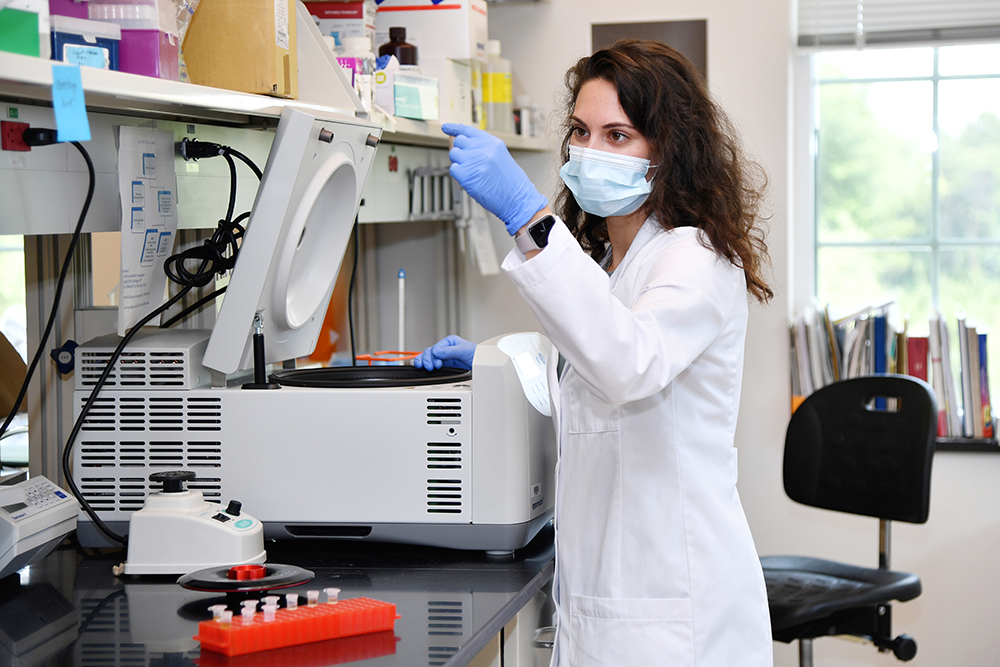
In March 2020, as the coronavirus pandemic was emerging, a team of researchers from UNC Charlotte’s Department of Bioinformatics and Genomics — curious about how SARS-CoV-2 RNA, the virus that causes COVID-19 spreads and accumulates on surfaces — went to work collecting samples from Niner Transit, the campus bus system, to learn more about the possible presence and transmission of the virus from high-touch surfaces. With the sudden shift to remote work that affected the entire campus, the researchers would have to wait to analyze the samples. After several months, the team returned to the lab to test the samples and seek answers to their initial questions. Here, Lauren Roppolo Brazell, a doctoral candidate in bioinformatics, talks about what they discovered — and what they hope yet to learn.
What prompted the Bioinformatics team to swab Niner Transit buses (and other forms of public transportation) in spring 2020? Why did you think it might be important?
LRB: With the advent of social distancing guidelines and a lack of understanding of exactly how COVID-19 was transmitted, our team was interested in learning more about how much of a threat surface-transmitted viral particles were. We brainstormed areas that are normally highly trafficked and frequently touched. On campus, Niner Transit fit the bill — detecting the presence of virus on high-traffic, high-touch surfaces could potentially help University administrators tailor social distancing and hygiene guidelines to keep students, faculty and staff safe.
Were you able to process samples immediately?
LRB: Samples were collected immediately after our protocol was approved by the University’s Institutional Review Board in early March, but necessary supplies like reagents and swabs were rationed to hospitals and testing facilities where their need was a priority. As a result, we had to freeze our samples and wait until fall to process them.
What is significant about the results?
LRB: Fortunately, our results indicated no detectable SARS-CoV-2 RNA on any of the high-touch surfaces we swabbed on Niner Transit vehicles. This aligns with what we've since learned from the Centers for Disease Control — that the virus spreads mainly through close contact from person to person.
Will the findings have applications beyond those for public transportation?
LRB: Overall, it seems that guidelines for good hand hygiene — such as frequent washing and using sanitizer — are beneficial in pandemic situations and could certainly be beneficial outside of the current pandemic, for example in regard to viruses such as those that cause influenza.
Are next steps planned for similar research? What else do you hope to learn?
LRB: Absolutely. Over the last year, research has determined that the virus is primarily transmitted via infectious airborne particles. Along with this information and the results of our surface swab study, we’ve shifted our focus to collecting air samples in high-traffic areas on campus. This is especially important as we move away from mask mandates and with the widespread availability of COVID-19 vaccine.